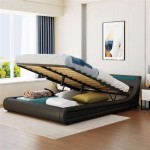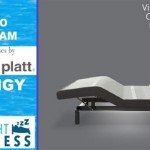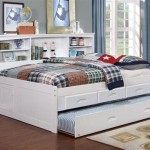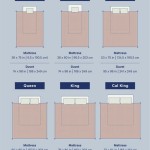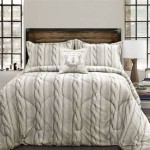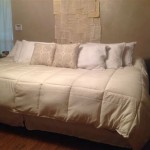Essential Aspects of Constructing a Queen Overhead Bunk Bed
Building a queen overhead bunk bed can transform a shared sleeping space into a cozy and functional haven. Whether you're creating a dedicated bunk room for siblings or accommodating extra guests, planning and preparation are crucial for a successful build. Here are essential aspects to consider when crafting your own queen overhead bunk bed:
1. Design and Measurements
Begin by sketching the design and taking accurate measurements of the room and bed components. Ensure that the overall height allows for comfortable sitting and movement on the lower bunk while providing adequate headroom on the upper bunk. The width and length of the bed should accommodate a queen-size mattress, with additional space for linens and blankets.
2. Material Selection
Sturdiness and durability are paramount when choosing materials. Solid wood, such as pine, oak, or maple, is a reliable option for both the frame and the ladder. Plywood can be utilized for the base of the upper bunk and additional support panels. For aesthetic appeal, you may incorporate metal or fabric accents as desired.
3. Framing the Bunks
Construction starts with framing the lower and upper bunks. Use sturdy beams to create the perimeter and support legs. Connect the beams with joists to create the base of the lower bunk. Install rails around the upper bunk to ensure stability and safety. Secure all joints with screws, nails, or bolts, and reinforce them with brackets.
4. Building the Ladder
The ladder provides access to the upper bunk. Design it with wide steps and a secure handrail. Ensure the ladder is attached to the bunks securely and allows for comfortable climbing. You can opt for a vertical or angled ladder depending on the available space and desired aesthetics.
5. Installing the Upper Bunk
Once the lower bunk and ladder are in place, it's time to install the upper bunk. Position it above the lower bunk, ensuring that the beams align accurately. Secure it to the lower bunk's frame or to the wall for added stability. Use strong screws or bolts and reinforce the connections with brackets.
6. Safety Precautions
Safety is paramount, especially for children using the bunk bed. Ensure that both bunks have sufficient guardrails to prevent falls. The ladder should be sturdy and non-slip, with even spacing between steps. Consider installing anti-tip brackets to prevent accidental overturning of the bed.
7. Finishing Touches
Complete your bunk bed with a fresh coat of paint or stain to match the room's decor. You can also add curtains or decorative elements to create a cozy and inviting atmosphere. Make sure to anchor the bunk bed to the wall if it does not have an inbuilt anti-tip mechanism.
Conclusion
Building a queen overhead bunk bed requires careful planning, precise measurements, and sturdy materials. By considering these essential aspects, you can create a functional and safe sleeping space that optimizes your room's layout. Whether for siblings, guests, or your own personal use, a well-constructed bunk bed will provide years of comfortable and restful sleep.

Queen Over Perpendicular Timber Bunk Custom Beds Bed Plans Diy

20 Cool Bunk Beds 2024 Stylish For S And Kids

5 Stylish New Bedrooms With Built In Bunk Beds

Multifunctional Queen Size Bunk Bed With Storage Area Plan Modern Bedroom Ideas Build Plans Loft

Woodworking Bunk Bed Plans Full Over Queen Free Beds Loft

5 Stylish New Bedrooms With Built In Bunk Beds

Multifunctional Queen Size Bunk Bed With Storage Area Plan Modern Bedroom Ideas Build Plans Loft

Twin Over Queen Bunk Bed Free Woodworking Plan Com

20 Cool Bunk Beds 2024 Stylish For S And Kids

Op Loftbed Blog Bunk Bed Plans Loft Queen Beds
